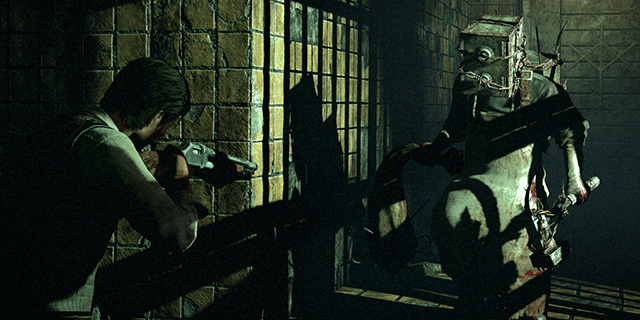
After nearly ten years away from a genre he helped pioneer, Shinji Mikami has returned to his survival horror roots with his latest title, The Evil Within. Focusing less on action and more on atmosphere and the “survival” aspect of survival horror, The Evil Within attempts to bridge the gap between the old ways of the genre and its current status. Unfortunately, it’s an experience that only rarely delivers on its potential.
Our nightmare-fueled plot follows Detective Sebastian Castellanos as he, and two fellow detectives, begin their investigation of a gruesome crime scene at an institution for the criminally insane. Sebastian is swiftly knocked unconscious and awakes to find himself in a world full of terrors, seemingly taking place inside of someone’s twisted mind. This allows for the writers to throw Sebastian into a variety of different environments without worrying about how to connect it all. It’s both brilliant and sloppy.
The mystery at the heart of The Evil Within initially seems compelling, yet it lacks anything for the player to latch onto. Sebastian, complete with hammy, half-hearted voice acting, is barely a character and more of a representation of the player. He has a back story but it’s only explored briefly, and you’re given little reason to care about him or the other characters you encounter along the way. It’s all so scattershot that it becomes less about “will these characters survive?” and more about “I wonder what weird environment we’ll be thrown into next.”
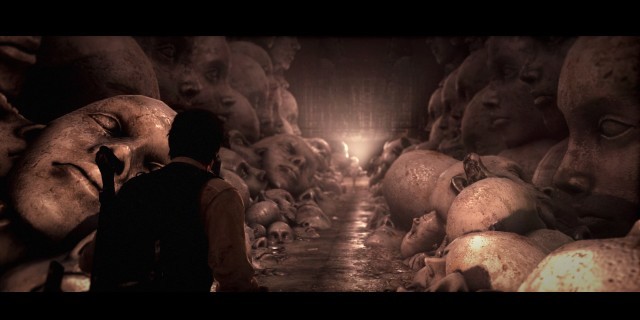
Second take: The environment
Nearly every choice that The Evil Within makes is made with the intention of instilling fear in the player. The seemingly random environments serve this purpose well, in that you are never allowed to get comfortable. As soon as you begin to learn the nuances of an environment things shift, often unexpectedly, creating a jarring and unsettling sense of dread that many contemporary horror titles have lacked. – Ryan Dunn
Taken at face value, that seems like a positive. The game’s environments are gorgeous and atmospheric, but also varied. You never spend more than a chapter in any one location and they all feel ripped out of a completely different horror game while still maintaining the same level of griminess throughout. It’s both consistent with the themes but also varied so you never find yourself bored of a single area. It’s an inspired design choice for sure, but the same can’t be said for the game’s reliance on horror tropes.
The unfocused nature of both the narrative and the designs make it seem less like a coherent horror experience and more like a hodgepodge of different tropes. Unsettling mental institution? Check. Creepy mansion? Check. Trap-filled maze area? Check. Village area full of crazies? Check. This laziness comes across in the enemy design as well. Yeah, zombies were cool, but what if we wrapped them in barbed wire? Now that’s scary! Add in the obligatory chainsaw-wielding psycho and some giant four-legged beasts, and you have a recipe for barebones horror.
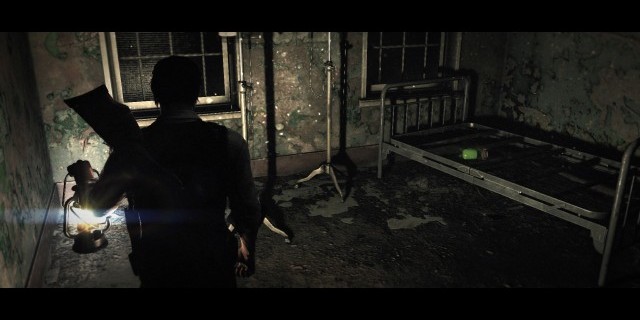
Second take: Recycled horror tropes
The Evil Within feels like a top-ten list of horror genre stereotypes, but there are a few places where it innovates to deliver some pretty anxious and frightening gameplay. I’ve killed enough zombies in my time that they no longer pose the same threat, but the intensity I felt when those same zombies were suddenly invisible and my only indication of their location was the shifting furniture and sounds as they ambled toward me was exhilarating. There are other similar moments that I found fresh and exciting, and while I wish they had gone further exploring new ideas, the times they did were worth it for me. – Ryan Dunn
The Evil Within makes up for its lack of originality with a menacing atmosphere that follows you from the beginning and never quite lets up. The set piece moments, the varied environments and the overall tension that hangs in the air as you enter a new area for the first time pull you into the experience better than any tin-eared dialogue or convoluted plot could ever hope to. It’s oppressive in a way you rarely see from survival horror games, and it’s easily the game’s greatest strength.
The core gameplay follows a basic formula, focusing mainly on two aspects: shooting and stealth. The stealth, which includes throwing distraction items not unlike The Last of Us, is rarely utilized well. The game’s opening segments barely teach you the tricks you need to avoid the game’s many dangers while forcing you into a stealth sequence, and when you’re well-equipped to handle these mechanics, you rarely have an opportunity to use them.
Sure, you can sneak around a good number of enemies, but almost every stealth moment in the game ends abruptly, forcing you into combat regardless of how well you do. Plus, with inconsistent enemy A.I. and instances of the distraction items simply not working or luring the enemies towards me rather than away, it makes it a needless exercise in frustration. I found it best to simply run past groups of enemies whenever possible and not even engage them in these instances, making me wonder why the developer bothered in the first place.
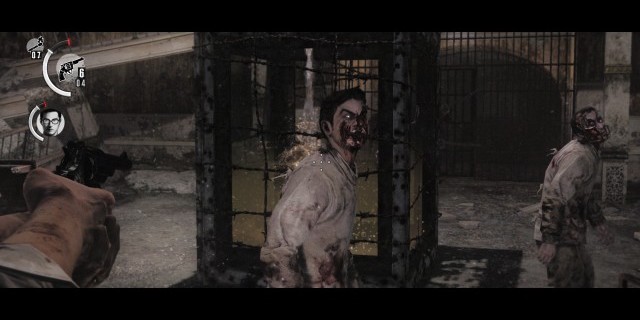
Second take: The combat
My number one recommendation for enjoying The Evil Within is playing the game on casual difficulty the first time through. The game is still stressful and challenging, but it is much more forgiving with both the amount of available ammo and the stealth elements. It takes away the sting of missing a shot dramatically and allows you to experience the fear without nearly as much frustration. The aim assist is also excellent, and when I found I was having difficulty lining up a shot in the heat of the moment I would quickly re-tap the targeting button and have a headshot lined up immediately. – Ryan Dunn
One of the features that is unique to The Evil Within is its focus on traps. Each environment you come across feature a number of traps you can disarm or leave in place. As long as you’re careful, you can mostly avoid these traps, but collecting them does play into creating ammunition. Leaving the traps in place and tricking the enemies into triggering them works sometimes, but often, like with the rest of stealth encounters, it is inconsistent. I’ve seen enemies run right across bear traps and trip wires without anything happening. This is the first of many instances of the game breaking its own rules.
Then there’s the combat, something you’ll be forced to rely on more as the game progresses. Despite the limited ammunition, you’ll often find yourself facing down large groups of enemies. Running is recommended and sometimes viable, but you’ll also encounter sections where your progress is gated until you take down the enemies or doors that require your full attention to open. This is where the game truly stumbles as every aspect of the combat is sloppy at best.
The problem is threefold. First, Sebastian’s movement is slow and cumbersome. You can run, but you’ll just as easily find yourself running into objects in the environment as you will get a safe distance away. Upgrading your stamina helps, but doesn’t solve this fundamental issue. The lack of any sort of dodge move, something that seems like a no brainer in a game all about avoiding direct contact with enemies, is a huge missed opportunity. One boss fight in particular, which has you facing a giant, dog-like creature that can run at you faster than you can dodge, made this obvious omission even more apparent. It’s one of the game’s many instances of trial and error.
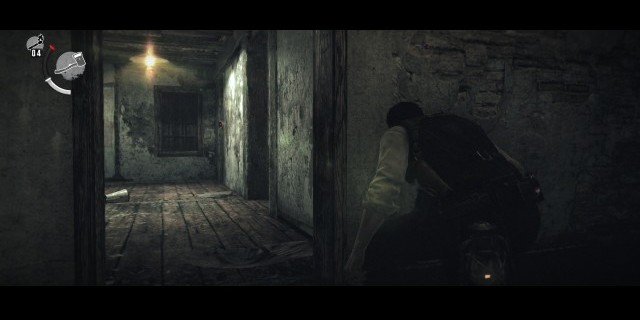
Second take: Burning Bodies
The burning bodies mechanic was my favorite gameplay feature in The Evil Within. The key to conserving the limited ammo was in mastering the ability to hit the leg of an enemy and then quickly bum rush him while on the ground to drop a lit match. It was immensely satisfying every time, and so useful that I actually got more nervous about running out of matches than running out of bullets. – Ryan Dunn
Second, the aiming itself. It’s sloppy and you’ll often find yourself shooting the air more than your enemies. This improves once you focus on upgrading your stability for each weapon, but the improvement doesn’t change just how sluggish it feels. In a game where ammo is a precious resource, forcing the player to deal with some awful aiming mechanics, intentional or not, seems cruel and makes each encounter a chore, not a challenge. This is less of a problem with, say, the shotgun, but most weapons, especially the pistol, never allow for accurate aiming.
It also touches on another instance of The Evil Within’s inability to follow its own rules. Another major component is being able to burn bodies. You’ll clearly know when enemies are down for good, but you can burn enemies when they are simply knocked down or burn bodies nearby other enemies to torch them as well. This is a great mechanic, but it rarely works as it should. Often enemies will be in the middle of getting up when I attempt to start the fire, and because the game prioritizes the animation, the match is wasted and the enemy is free to get a cheap shot. Plus, the “burn bodies when enemies are nearby” move often misses its targets completely. It’s never clear how close they need to be, but it’s something I almost never had luck pulling off.
Finally, there’s the camera. More specifically, it’s the combination of the close behind-the-back camera and unnecessary letter-boxing can make it difficult to properly see enemies around you. I’ll often be attacked out of nowhere simply because the camera was too zoomed in and the weird aspect ratio prevented me from seeing just enough to be able to potentially avoid taking damage. Going back to the boss fight I mentioned earlier, it became pretty easy to get attacked from behind simply because I wasn’t able to both search for spare ammo in the environment and carefully watch for when the boss was charging. Audio cues are in place, but again, the lack of a dodge move made it hard to avoid taking damage, especially when I had no idea which direction it was coming from.
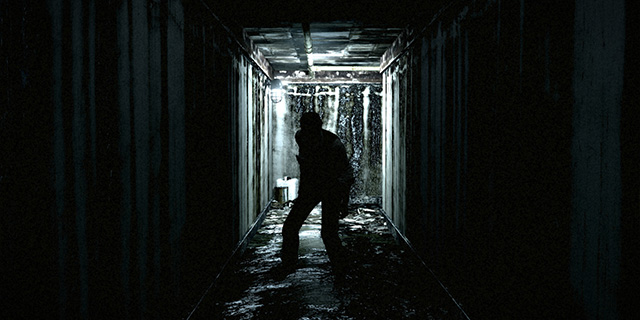
All of these add up to a frustrating experience that is rarely enjoyable to play. The limited ammunition and supposed focus on stealth make this more of a traditional survival horror game than recent Resident Evil titles or even Dead Space, but the game’s heavy focus on combat turned my feelings of dread into frustration quickly.
The Evil Within never scared me with its tired horror tropes, constantly shifting, unfocused narrative or its sluggish gameplay. The excellent varied environments and amazing atmosphere aren’t enough to make up for a game that is almost always frustrating to play. There are moments of brilliance, but unfortunately, like our protagonist, these moments are trapped in a seemingly never-ending nightmare.
Pros: Excellent atmosphere, environmental variety allows each chapter to stand out
Cons: Clunky movement and aiming, inconsistent stealth and enemies, trope-filled story



















